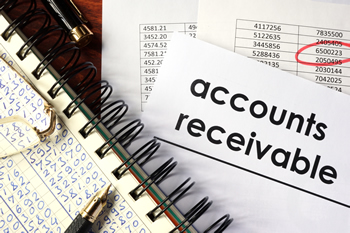How do you fix cash flow problems in a small business?
Solving cash flow problems is a dilemma that many small business owners and self-employed face. Even when the rest of the economy seems OK, small businesses can run short of cash to make loan payments, pay workers, rent, utilities, vendors, and themselves.
The 2023 Deloitte holiday retail survey indicates, for example, that consumers are planning to spend more this season than they did before the pandemic. Yet many small businesses don’t think they’ll benefit.
According to a revenue poll published in November by Alignable, 52% of small businesses expect to make less revenue in Q4 2023 than they did in Q4 2022. Furthermore, 56% say their sales are “sluggish at best.”
Sluggish sales and cash flow problems aren’t limited to small retailers or businesses that sell to consumers. When rising prices put the pinch on business or personal budgets, all types of small businesses can feel the squeeze.
Causes of Small Business Cash Flow Problems
Small businesses can run into cash flow problems when inflation causes their customers to seek out lower-priced options. They also experience cash shortages when their customers run short of cash and prioritize which invoices to pay. Invoices from small businesses that don’t provide essential services wind up on the bottom of those priority lists. Sometimes they don’t get paid at all.
Other common reasons small businesses run short of cash to pay their bills include:
- Not generating enough sales
- High overhead costs and operating costs
- Rising costs for inventory and supplies
- Increasing interest rates
- Late-paying customers
- Failing to raise prices
- Loss of one or more major customers
- Increased competition
- Overspending in good times
- Over hiring in good times
- Poor financial management and budgeting
Understanding cash flow
To fix a cash flow problem, you have to understand what cash flow is and what it’s not.
Cash flow isn’t how profitable your business might look on paper when you add up the year’s sales and deduct the year’s expenses.
Instead, it is the movement of money into and out of your business at any given point in time. In other words, If the cash on hand (i.e., in the bank) at any given time is less than the money you must pay out at that time, you have a cash flow problem.
For instance, when I ran an ecommerce site, we would order inventory and have to pay for it within 30 days. It might take 30 days or longer after we received an inventory order for the products to be sold. We’d also incur expenses to package and ship order to customers.

Most of the customers who placed the biggest orders with us were businesses that needed to be invoiced. We’d send the invoices when we shipped the orders. Once the customers received their merchandise and invoice, they would typically take 30 to 60 days to pay.
We had to keep enough cash on hand to cover inventory and operating costs from the time we purchased the inventory until the time we collected from our customers.
You don’t have to be selling products to run short on cash either. If you are a service provider and don’t get paid for work for some time after you’ve completed it, you’ll need cash on hand to pay your bills (and yourself) until you receive payment from your clients.
If you haven’t planned and budgeted for the gap between when you incur costs and receive money for your products or services, you’ll have a cash flow problem. Borrowing money to meet the cash shortage adds to your costs of doing business – and could make your cash flow problem worse.
Analyze Your Sales and Expenses
The first step in solving your cash flow problem is to determine what’s causing it.
Analyze your sales and expenses. Look at your monthly sales. How do they compare to previous sales? Look at both the total number of sales transactions and the dollar amounts. Are they going up, staying the same or going down compared to previous months or seasons? If the volume or dollar amount of sales is down, analyze why. Then consider changes to correct the situation.
Next, look at your expenses and compare them to previous periods, too. What costs have risen? Are there any unusual increases, new monthly expenditures or new vendors being paid? Investigate anything that seems unusual or excessive.
While there may be many contributing factors, a careful analysis of your situation can help you pinpoint main areas of concern. Then you can develop a plan to address those concerns using one or more of these tactics to deal with budget deficits.
Strategies to Solve Your Cash Flow Problem
- Increase your prices. If your costs are increasing, you need to raise your prices to compensate for the increased costs. But even if increased costs aren’t the reason for your current cash crunch, you should analyze your pricing. What are all your costs related to making a sale? Which products or services are most profitable? Which are least profitable? How do your prices compare to your competitors? Could you make as much or more by making fewer sales at higher prices? Do the math.
- Accept the most common forms of payment. Customers have different preferences for how they pay their bills. To minimize cash flow problems, consider accepting all common forms of payment. Although credit card fees and fees for other online payment systems do take a big bite, you have to weigh the cost of those fees against the value of lost sales if you don’t accept credit cards. I
If you have customers who use ACH payments to pay vendors and you are concerned about giving out banking information, set up a separate checking account at your bank to receive ACH payments. Then, when you get paid, transfer the payments into your operating account. Note: check with your bank to see if you need to keep a minimum balance in the second checking account to avoid monthly fees. - Encourage customers to pay by cash or check instead of credit card. Credit card fees take a big bite out of small business sales. To soften the blow, some businesses either charge a fee to accept credit cards or offer a discount for paying by cash. The laws for recouping credit card fees vary from state to state. Be sure you know your state law and your credit card processors’ rules before adding a credit card fee or offering a discount for cash.
- Ask the merchant service provider for a lower rate. If you’ve been in business for a while, do substantial sales, and have few or no chargebacks, contact your merchant service provider and ask them to lower your rate. If they refuse, get quotes from other providers.
- Use progress or incremental billing. If you do work that has milestones and/or may take some time to finish, bill your clients at various stages of the project. A common method is to ask for a downpayment to start, another payment at the halfway point and a final payment.
- Offer a discount for early payment. Do you have customers who buy from you regularly? Improve your cash flow by offering a discount for payment in advance. Alternately, a two to three percent discount for payment within 10 days may encourage some customers to pay early. But beware: If you have less-than ethical customers who regularly pay late, they may send you a check for the discounted amount and still pay late.
- Sign customers to a contract for services. If you offer some type of repetitive service, offer customers a discount if they sign a contract to receive your services for a specified length of time. You could ask them to pay in advance for the entire contract period, or you could charge the customer’s credit card each time the service is performed. To avoid chargebacks, alert the customer of the service and impending credit card charge a few days before the service is performed.
- Run a credit check on new customers. If you have to invoice a new customer and the dollar amount will be large, check their credit rating before you do any work or agree to ship merchandise. If the credit report isn’t good, require payment upfront.
- Send invoices immediately. Don’t put off writing up and sending invoices. The longer you delay, the longer it will take to get paid. When possible, send your invoices in email to speed the process (and save the cost of stamps.)
- Stop invoicing customers. Require payment at the time of sale for all products and services. If that’s not possible, set a minimum sale amount for billing customers. Even if all your customers pay on time, having to send invoices and make sure they are paid eats up employee time. Time you pay for.
- Prepare invoices as directed. Bigger companies and government agencies may have very specific rules for where invoices should be sent, and what information (such as a purchase order number) must be included on them. Get that information in advance and be sure to follow it. If the required information is missing, payment may be delayed or not made. Be sure all invoices include your phone number and an email address so the customer can contact you if there is missing information or some other problem.
- Follow up on unpaid invoices quickly. Send out payment reminders to customers if their payments aren’t received within a couple of days of the due date. The longer you wait, the longer it will take to get paid. The first reminder could be a brief, friendly note or a phone call saying you noticed that payment is overdue, and that you wanted to be sure they received the invoice. Remember to ask when you can expect payment.
- Stop selling to late-paying customers. Customers who are placing new orders but have outstanding invoices may be having cash flow problems of their own. Keep their cash crunch problem from becoming yours by requiring payment for outstanding balances before making a new sale.
- Handoff collections to another company. Depending on your business, you might want to make arrangements with a third party financing company to provide credit to your customers. A different option for collecting from late paying customers would be to sell your accounts receivable to a third party and let them collect.
Other strategies such as upselling customers, expanding your product line, or reducing your expenses may help improve your cash flow, too. But no matter what steps you take, you need to plan for the gap between when you incur expenses and take steps to ensure your customers pay you as soon as possible. get paid as soon as possible.
Copyright Janet Attard, 2023. All rights reserved. May not be reprinted, reproduced, or reposted without permission from the author.
